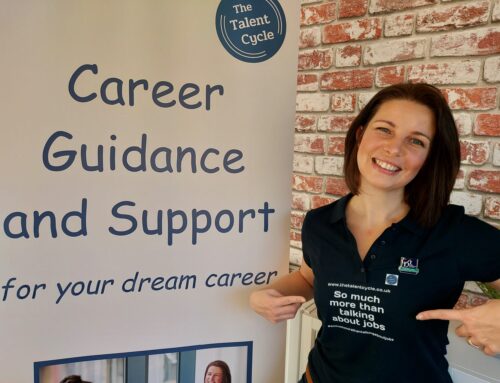To mark International Women’s Day, this article looks at your right not to be discriminated against if you’re looking for work, in employment, studying, training or going for promotion in the future. It tells you about different types of discrimination, explains a little about what you should do if you encounter it and, most importantly, signposts you to sources of advice.

This article is written with women in mind and gives examples accordingly, but most of the information also applies to anyone with a ‘protected characteristic’ (not just sex) as identified by The Equality Act 2010; these are:
- age
- disability
- gender reassignment (this includes people who identify as non-binary and gender fluid)
- marriage/civil partnership
- pregnancy/maternity
- race
- religion or belief (or no belief)
- sex (man or woman)
- sexual orientation.
The Equality Act aims to prevent discrimination based on these protected characteristics. The Act covers the provision of all sorts of services and all sorts of organisations including colleges, universities, private training providers and employers. It’s relevant if you are applying for (or perhaps already in) work – whether permanent, temporary, full time or part time – an apprenticeship or similar training programme, or a course.
What is meant by discrimination?
You may encounter different types of sex discrimination. Bear in mind that discrimination doesn’t have to be intentional. It could be a one-off action or as a result of a rule or policy.
Direct discrimination is when you are treated differently just because you are a woman. You have to show that you have been treated less favourably than a man in a comparable situation. Clearly, all the following examples are discriminatory.
- A construction course is advertised for males only; the provider believes that women are not strong enough and wouldn’t ‘fit in’.
- A woman is expected to wear a revealing uniform for a sales role and is dismissed when she complains.
- A man is paid more than a woman doing a comparable job.
Indirect discrimination is less obvious than direct. It can be when a woman is put at a disadvantage compared with a man as a result of a rule, policy, criteria, condition or practice.
- A warehouse job ad says that applicants need to be over 5’ 7”. This would limit the number of women who could apply.
Harassment occurs when a woman is subjected to unwanted conduct (this could be physical, verbal or non-verbal) and she finds it distressing, offensive or humiliating. Harassment could involve bullying, exclusion from activities, being ignored or an offensive atmosphere. Even if the behaviour is not directed at you, you can make a complaint of harassment if you find it offensive.
- A college has a culture where sexist jokes are directed at female students, which makes them feel very uncomfortable.
- A boss tells a woman she’ll only get promotion if she goes out on a date with him.
Victimisation refers to those who are treated unfavourably because they have made a complaint about discrimination, or they’ve supported someone who has made a complaint.
- A woman helps a fellow student bring a discrimination case against her college to a tribunal but is then refused a university reference herself.
When is discrimination not discrimination?
There are sometimes reasons to discriminate, but your learning provider or employer would need to be able to justify their actions and the actions themselves would have to be proportionate. There might be objective justification for the discrimination or there may be an occupational requirement. Occasionally a law other than the Equality Act may be broken if discrimination doesn’t take place. Here are examples where, as a woman, it is unlikely you could claim sex discrimination.
- Only men are auditioned for a lead male role in a drama school production. (This would be on grounds of authenticity.)
- A man is sought to work for a charity that aims to raise boys’ self-esteem. (This would be to provide a role model and have empathy with the service users.)
- A man is required to provide personal care in the home of a male client. (This is on grounds of decency and privacy.)
- Only a man can become a Catholic priest. (This is a faith-based occupational requirement.)
Facing discrimination?
If you believe you have suffered discrimination, keep a record of the dates, times and details of any incidents and discussions, and any witnesses or other people involved. Try to find someone you trust – perhaps a trade union or student rep – to be with you during any meetings. It’s also sensible to confirm things in writing; emails will provide proof of who you informed, and the date and time.
Rather than escalating an issue too soon, but only if safe and feasible to do so, talk to those involved. Explain how you are feeling, and make it clear that the law is on your side and you will take further action if things aren’t resolved.
If an informal approach doesn’t work or isn’t possible, inform your immediate manager or supervisor if you’re employed, or your tutor, teacher or training co-ordinator if you’re in education or training. Of course, if the complaint concerns these people, get in contact with someone else in a position of authority – perhaps a head of department or a human resources manager.
If necessary, make a formal complaint. All organisations should have a grievance procedure you can follow.
Get advice from a specialist. This could be a solicitor or someone from Citizens Advice or Acas (see below). They may be able to help you sort out the issue without a need for legal action.
As a final resort, you can take your case to an employment tribunal or court. There are time limits for complaining after discrimination has taken place, so make sure you are within these. If a tribunal or court rules in your favour, the employer or learning provider will have to compensate you or remedy the situation.
An improving world?
It’s obviously better for everyone if all people are treated with fairness and respect. These days, many employers and learning providers are very aware that there are advantages to having a diverse workforce or student population, and it’s in their interests to recruit and develop the best people regardless of whether they are male or female.
Lots of employers and learning providers now take steps to ensure equality and diversity. When you fill in an application, you may be asked to complete an equality and diversity monitoring form. These help organisations monitor the characteristics of people applying for opportunities so that they can ensure that they are not disadvantaging people with certain protected characteristics. Also, to try to remove bias from the recruitment and selection process, you may be assessed on the competencies required to do a job or training programme rather than on factors that are irrelevant.
‘Positive action’ can be taken where women are particularly underrepresented or face disadvantage in a setting. For instance, there’s still a long way to go to increase the number of women studying STEM subjects or working in engineering. And women are still underrepresented at board-level in many organisations. Here are some examples of how positive action can help address such inequalities.
- A training scheme for computer software developers is advertised in media likely to be accessed by women and the advert states that it particularly welcomes applicants from women who are underrepresented in the sector.
- An employer aims an engineering internship and bursary scheme at women.
- To address the imbalance between the number of women in junior roles compared to senior management within a bank, a mentoring scheme is introduced for female employees.
However, when it comes to recruitment or promotion, a woman can only be selected over a man in a tie-break situation.
Find out more
You can find out more about your rights and get advice through:
- Acas – provides free, impartial advice on workplace rights.
- Citizens Advice – contact an adviser online or arrange a meeting in person.
- The Equality Advisory & Support Service – helps individuals with equality and human rights issues across England, Scotland and Wales; you can find advice and resources on their website, call the helpline on 0808 800 0082 or get support online.
Depending on your circumstances, you may be able to get support from your adviser/work coach at the Jobcentre Plus, or from a career adviser (including those who work for the National Careers Service in England, Careers Wales, the Careers Service for Northern Ireland or Skills Development Scotland).
Although great strides have been made in recent years to address inequality for women in work, education and training, unfortunately discrimination still takes place. This article should have given you a broad understanding of your rights, but the law on discrimination can be very complex, so remember that there’s plenty of advice and support out there.
With a background working with apprentices and teaching in further education, Debbie was employed as an in-house careers author before establishing herself as a freelancer. As well as co-authoring numerous careers books, Debbie has produced resources and web content for a range of high-profile clients including Health Careers, the Royal Society of Chemistry and English Heritage.





